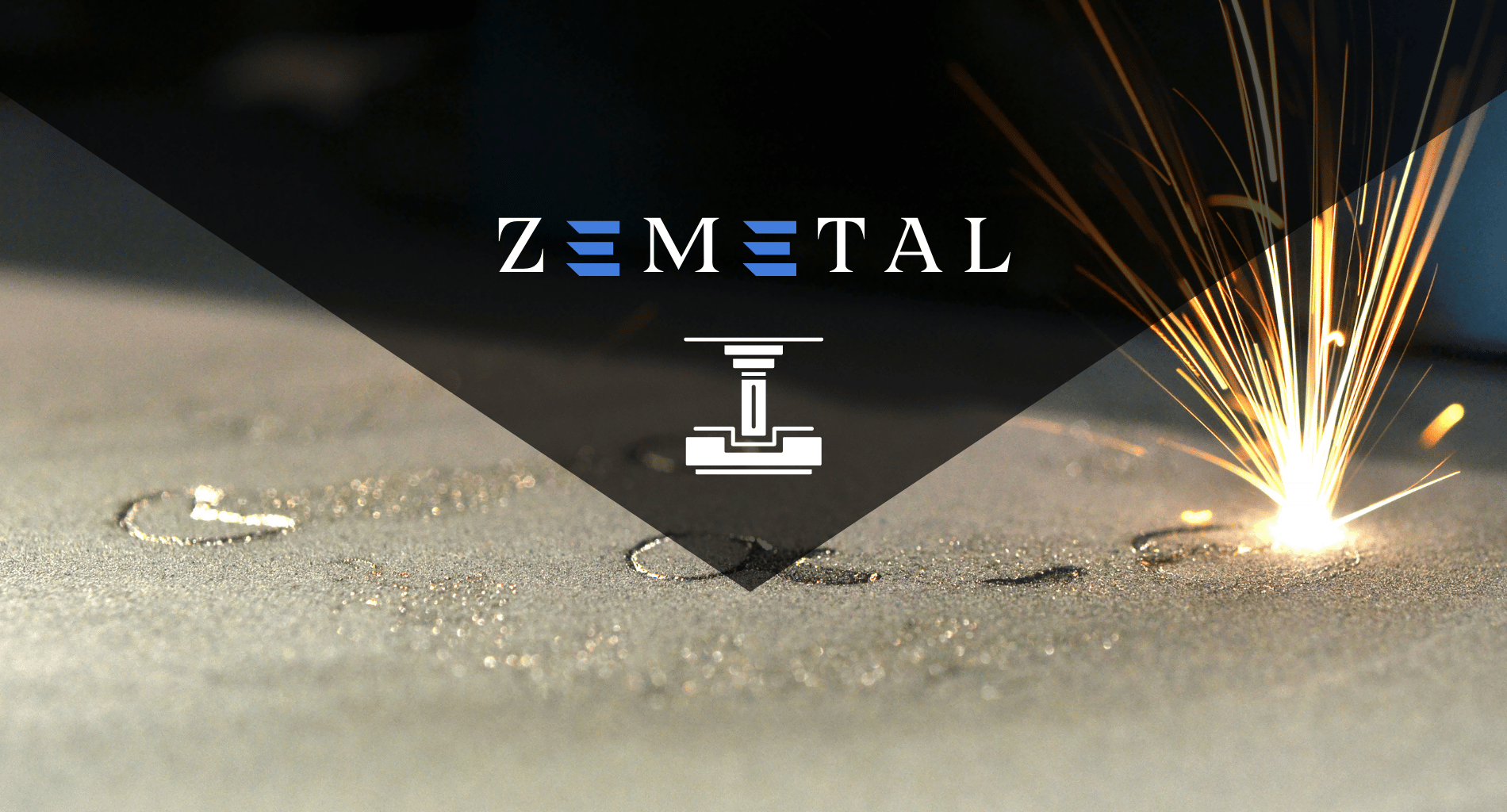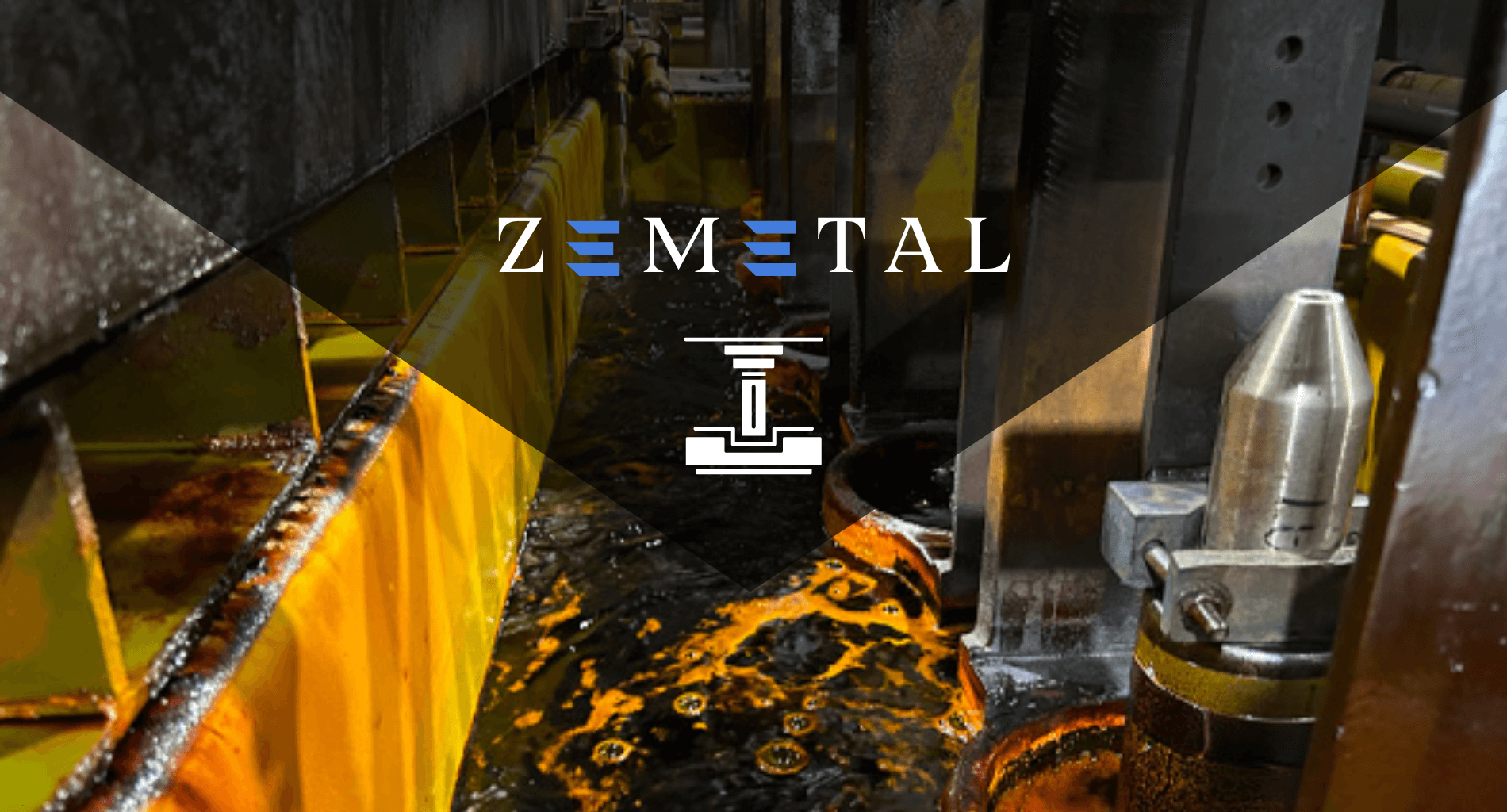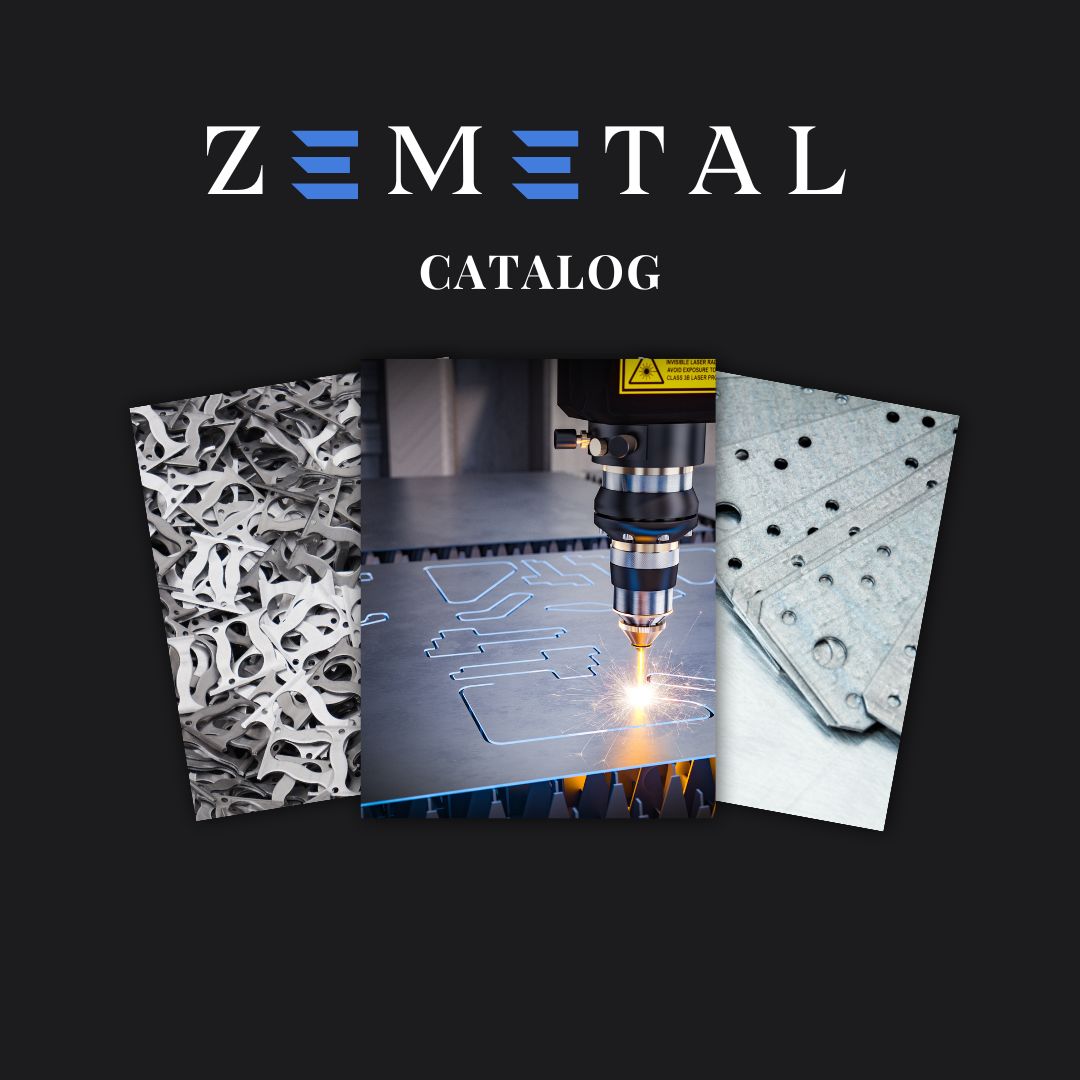Could screen printing be the key to revolutionizing metal fabrication? This inquiry highlights the role of screen printing in introducing innovative creative and functional possibilities.
As an expert, I’ve witnessed firsthand the impact of innovative techniques like screen printing in this field.
Screen printing represents a significant advancement, enabling the creation of complex designs and reliable finishes. It is as a crucial tool for businesses looking to distinguish themselves.
In the following sections, you’ll discover how screen printing can elevate your projects and why it’s becoming a sought-after skill in the industry.
Read on to unlock the potential of screen printing in metal fabrication.
1. Understanding Screen Printing Design
Screen printing, traditionally used in the textile industry, has found a compelling application in metal fabrication. It allows for the creation of intricate, durable designs on various metal products, ranging from industrial parts to decorative items. This method is particularly advantageous for producing high-quality, repeatable patterns and images, essential in both functional and aesthetic applications.
Screen printing offers the flexibility to incorporate a wide range of colors and textures, making it a valuable tool for businesses looking to differentiate their products in a competitive market. With its combination of precision and creativity, screen printing design is redefining the boundaries of metal fabrication, offering endless possibilities for innovation.
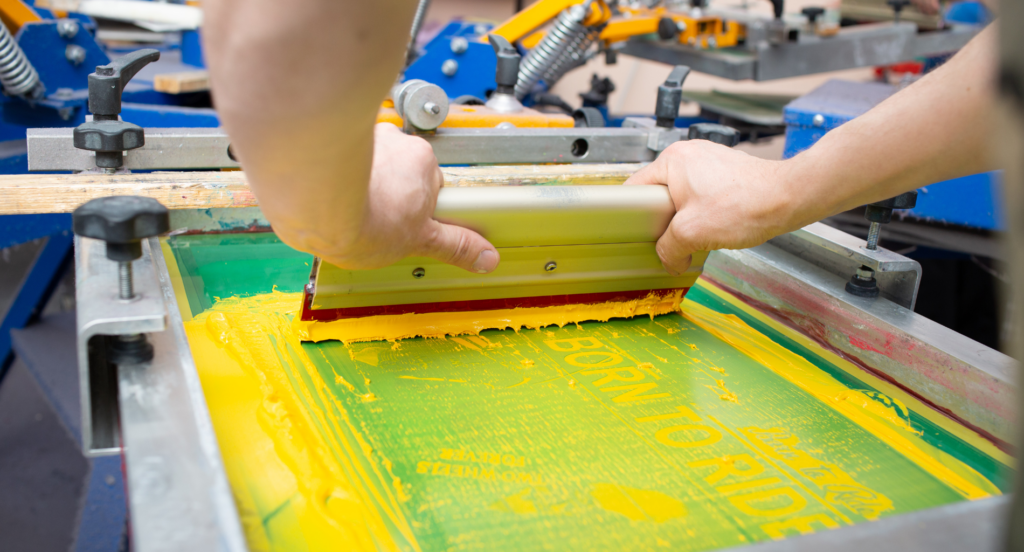
2. Benefits of Screen Printing Design
Screen printing, when applied to metal fabrication, offers unique advantages that enhance both the product quality and the business potential. Here are some specific benefits:
- High-Resolution Detailing on Metal Surfaces: According to Tuolian Metal, unlike other printing methods, screen printing can achieve fine, high-resolution details on metal surfaces. This is crucial for intricate designs, especially in applications like custom signage, branding plates, and decorative panels where precision is key.
- Strong Adhesion to Metal Surfaces: The inks and techniques used in screen printing are specifically suited for metal, ensuring strong adhesion and longevity. This means designs are less likely to chip, fade, or wear off, even in harsh industrial environments or outdoor settings.
- Efficiency in Mass Production: Screen printing is highly efficient for mass-producing designs on metal parts. Once the screen is prepared, replicating the design on numerous pieces becomes a fast and cost-effective process, which is ideal for large orders and continuous production lines.
- Capability to Work with Diverse Metal Types: Screen printing’s versatility allows it to be used on various types of metals, including lightweight aluminum, robust steel, and even delicate copper foils. This makes it a flexible solution for a wide range of metal fabrication projects.
3. Design Considerations for Screen Printing
When it comes to integrating screen printing into metal fabrication, certain design considerations must be taken into account to maximize the benefits discussed earlier. Here are three crucial aspects:
Choosing the Right Materials
Selecting appropriate materials for both the screen and the ink is crucial for achieving the desired outcome. The type of metal being printed on plays a significant role in this decision. For instance, using a more resilient ink for harder metals like steel can ensure better adhesion and durability. Similarly, the mesh count of the screen should be chosen based on the complexity and size of the design, as well as the viscosity of the ink.

Design Complexity and Scale
The complexity of the design directly impacts the screen printing process. Finer details require higher mesh counts to accurately transfer the design onto the metal. Moreover, the scale of the design needs to be compatible with the screen size and the printing equipment. Larger designs might require segmented printing and careful alignment, whereas smaller, more detailed designs demand precision in the screen-making process.

Preparing the Metal Surface
Proper surface preparation is essential for ensuring the longevity and quality of the screen print. The metal surface should be clean, free of oils, and, if necessary, treated with a primer or a base coat to enhance ink adhesion. This step is particularly important for metals that are exposed to outdoor elements or those that undergo frequent handling, as it significantly affects the durability of the printed design.
4. Techniques and Methods in Screen Printing
Building on the design considerations outlined earlier, employing specific techniques and methods is key to successful screen printing in metal fabrication. Here are some of the most effective approaches:
High Precision Stencil Creation
Creating a stencil with high precision is vital for detailed and complex designs. At Zemetal, this involves using a fine mesh screen and a light-sensitive emulsion. The emulsion is exposed to UV light through a film with the design, hardening in the exposed areas. The unexposed parts, are then washed away, leaving a precise stencil. This accuracy is particularly important for metal surfaces, where even minor flaws can be noticeable.

Multi-Color Layering Technique
For designs that require multiple colors, the layering technique is crucial. This involves using separate screens for each color, carefully aligned to ensure the design layers correctly. The process requires meticulous planning and execution, as each color layer must dry before applying the next. This technique is essential for creating vibrant, multi-colored designs on metal products, adding depth and visual appeal.

Ink Application Method
A squeegee is used to evenly spread the ink over the screen, pressing it through the mesh onto the metal surface. The amount of pressure applied, the angle of the squeegee, and the speed of the stroke are all critical factors that determine the evenness and thickness of the ink application, directly affecting the clarity and sharpness of the printed design.
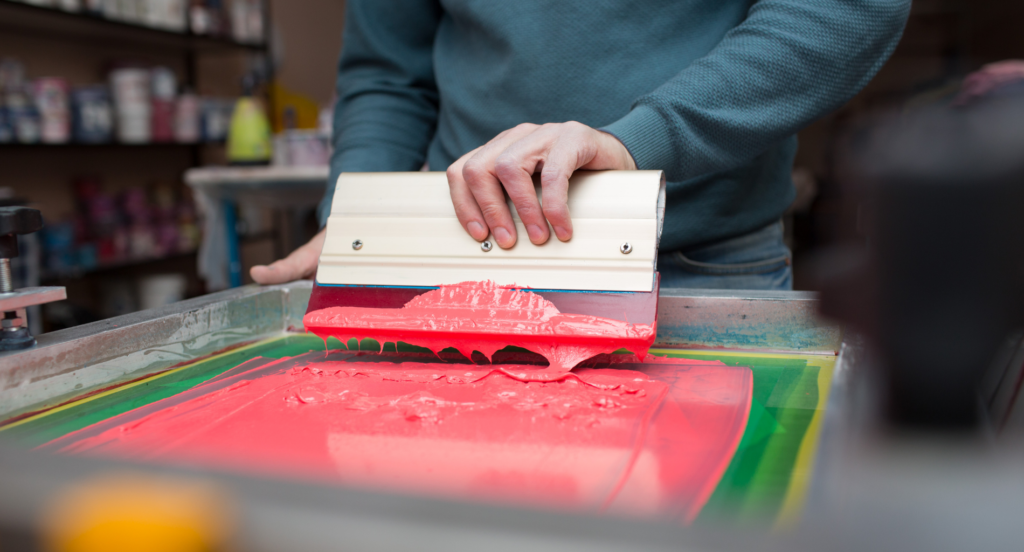
5. Trends in Screen Printing Designs
Following the exploration of techniques and methods in screen printing for metal fabrication, it’s equally important to stay updated with the latest trends in the field. Here are three notable trends:
Eco-Friendly and Sustainable Inks
There’s a growing shift towards using eco-friendly and sustainable inks in screen printing. As environmental concerns become more prominent, businesses are seeking inks that are less harmful to the environment, without compromising on quality or durability. These inks are typically water-based, contain fewer volatile organic compounds (VOCs), and are safer for both the environment and the workers handling them.
Metallic and Reflective Finishes
Metallic and reflective finishes are gaining popularity, especially in the decorative and branding aspects of metal fabrication. These finishes add a luxurious and high-end look to the products, making them stand out. Incorporating gold, silver, and copper tones, or even holographic and reflective elements, can elevate the aesthetic appeal and attract more attention to the product.
Integration of Digital Elements
The integration of digital elements into screen printing is a trend that’s blurring the lines between traditional and modern printing methods. At Zemetal, this includes using digital technology to create more precise and intricate stencils and combining screen printing with digital printing techniques for more complex and colorful designs.
6. Challenges in Screen Printing Design
As we examine the latest trends in screen printing designs, it’s equally crucial to acknowledge the challenges that come with these evolving practices in metal fabrication. Here are some of the key challenges:
Maintaining Quality with Complex Designs
As designs become more intricate and detailed, maintaining a high level of quality can be challenging. The precision required for complex patterns and the need for accurate color reproduction demand skilled craftsmanship and advanced equipment. Ensuring that fine details are accurately captured and replicated on metal surfaces is a significant challenge, especially when working with large volumes.
This table highlights key challenges and solutions in maintaining quality with complex designs, particularly in metalwork, where precision and color accuracy are crucial.
| Challenge | Solution | Importance in Metalwork |
| Precision in Complex Patterns | Advanced Machinery & Skilled Craftsmanship | Essential for Detail Replication |
| Accurate Color Reproduction | High-Quality Printing Techniques | Critical for Aesthetic Integrity |
| Consistency in Large Volume Production | Streamlined Processes & Quality Control | Vital for Uniform Product Quality |
Balancing Cost and Efficiency
Incorporating eco-friendly inks and hybrid digital-screen printing techniques often leads to increased production costs. Businesses must find a balance between adopting these innovative methods and maintaining cost-efficiency, especially when catering to markets that are sensitive to price changes. This is critical to stay competitive without compromising on the environmental and aesthetic values that these trends bring.
Adapting to Rapidly Changing Trends
The market’s evolution drives a continuous demand for innovative finishes, textures, and design elements. To stay ahead of these trends, there’s a need for ongoing research, development, and investment in new technologies and materials. In line with this trend, Research and Markets reports that the screen printing market is on an impressive growth path, anticipated to reach an estimated $11.2 billion by 2030.
7. 3 Tips for Choosing the Right Screen Printing Design
Addressing the challenges in screen printing design, especially in the context of metal fabrication, is crucial for achieving desirable outcomes. Here are four essential tips to guide you:
#1 Assess the Complexity of the Design
Consider the complexity of your desired design and how it translates onto metal surfaces. For example, complex designs with fine details require high mesh count screens and precise ink application. Ensure that your design choice aligns with the capabilities of your chosen screen printing services and expertise level.
#2 Understand the Material’s Properties
Different metals react differently to inks and printing processes. It’s important to understand the properties of the metal you’re working with, such as its surface texture, heat resistance, and chemical reactivity. This knowledge will help you choose a design that not only looks good but also adheres well and lasts long on the specific metal.
#3 Factor in End-Use Conditions
Consider the conditions under which the printed metal will be used. If the product is meant for outdoor use or in harsh environments, choose designs that are simpler and use inks that are known for their durability and resistance to environmental factors. This foresight will ensure the longevity and quality of the screen print.
Conclusion
Screen printing in metal fabrication opens up a new spectrum of creativity and efficiency. It’s about creating products that are as functional as they are visually appealing. Businesses in the metal fabrication sector, whether they are wholesalers, or small-scale operators, can greatly benefit from incorporating this technique into their workflows.
For those looking to explore the possibilities of screen printing in metal fabrication, Zemetal offers comprehensive metal fabrication services tailored to your needs. Contact us today to see how we can help.
Dive Deeper Into Our Resources
Looking for more diverse service options? Browse through our handpicked selections:
Still haven’t found what you’re looking for? Don’t hesitate to contact us. We’re available around the clock to assist you.


